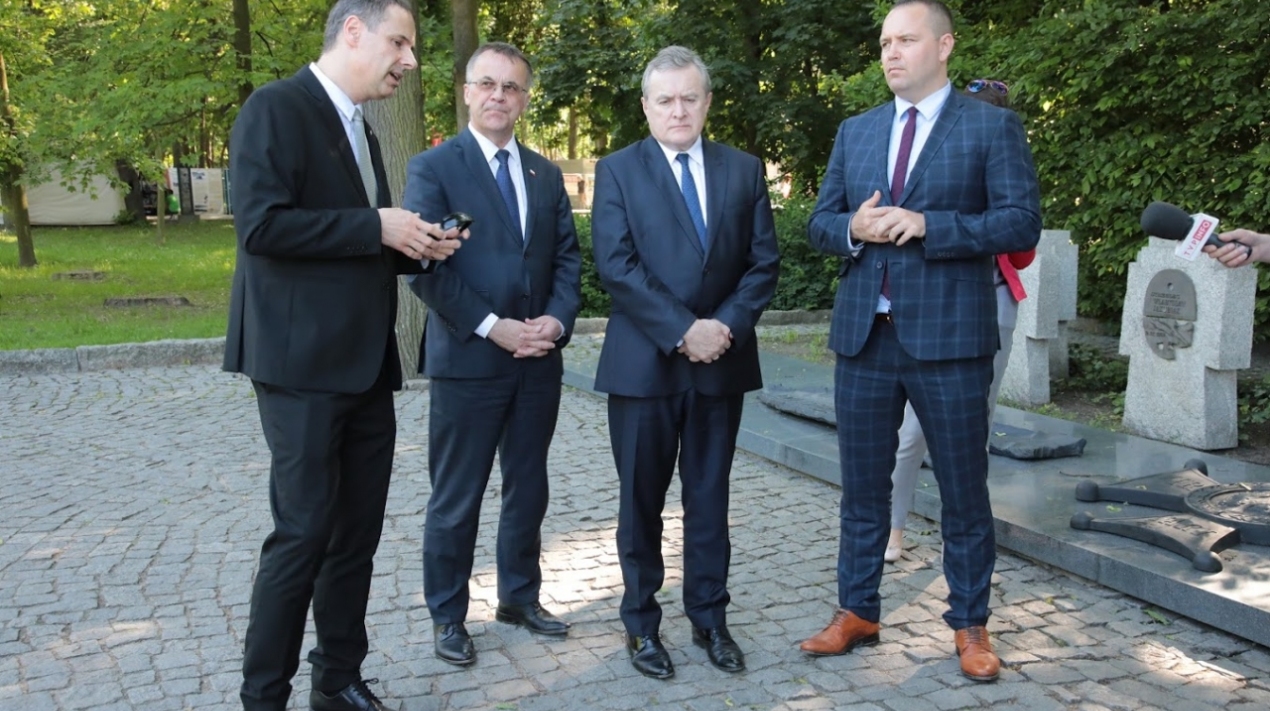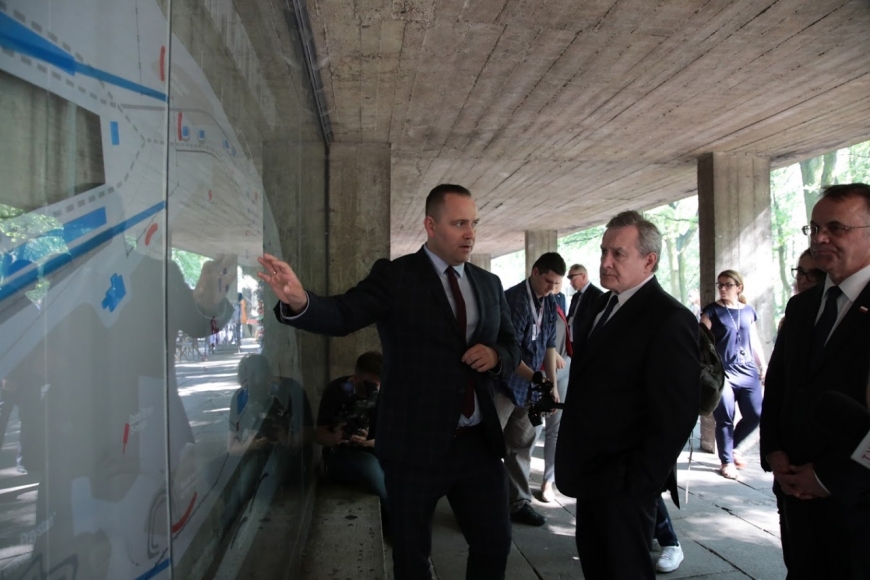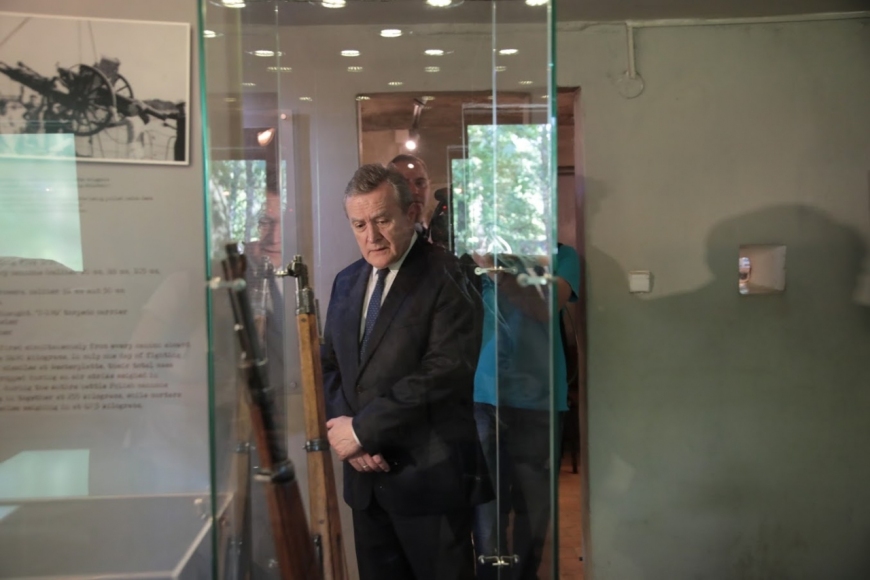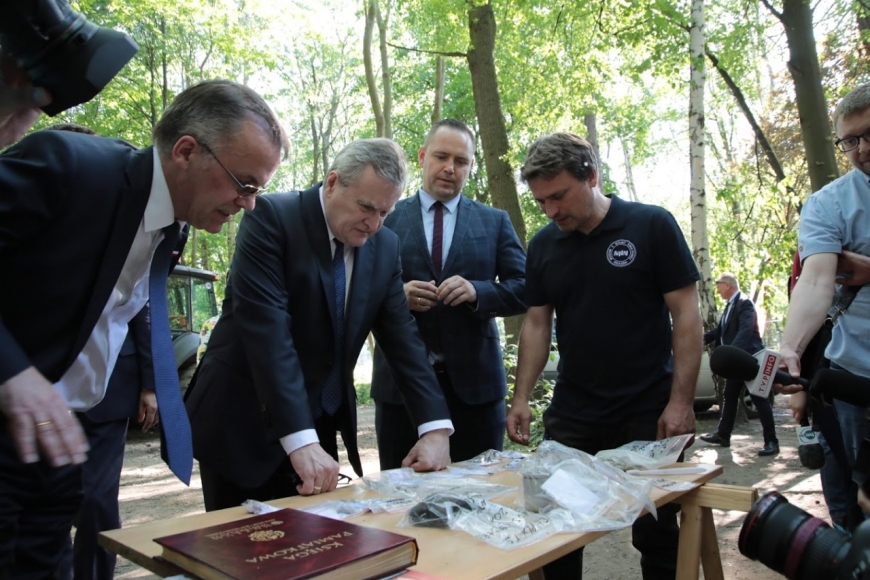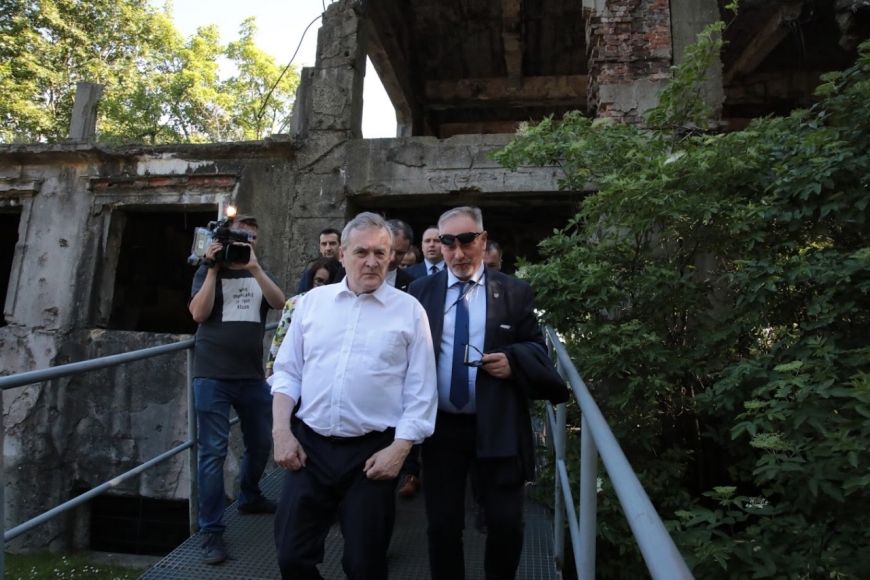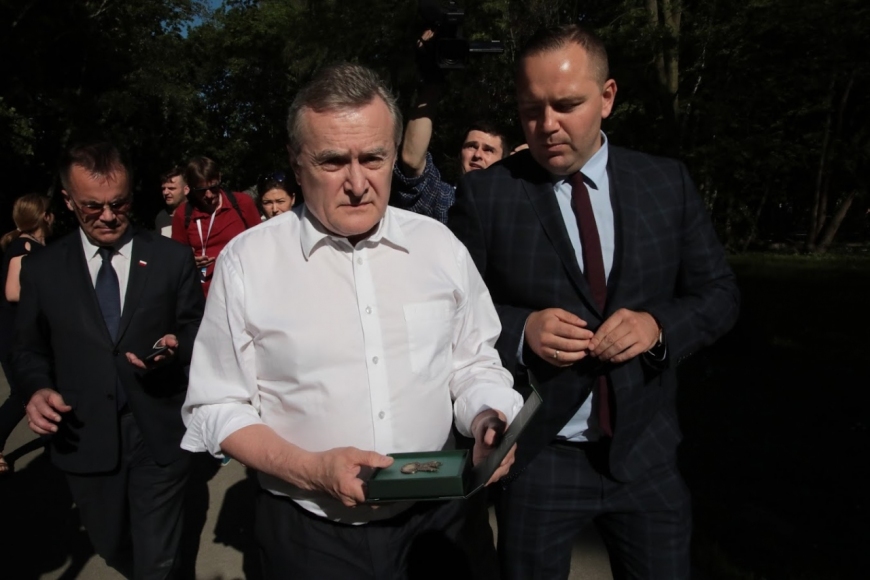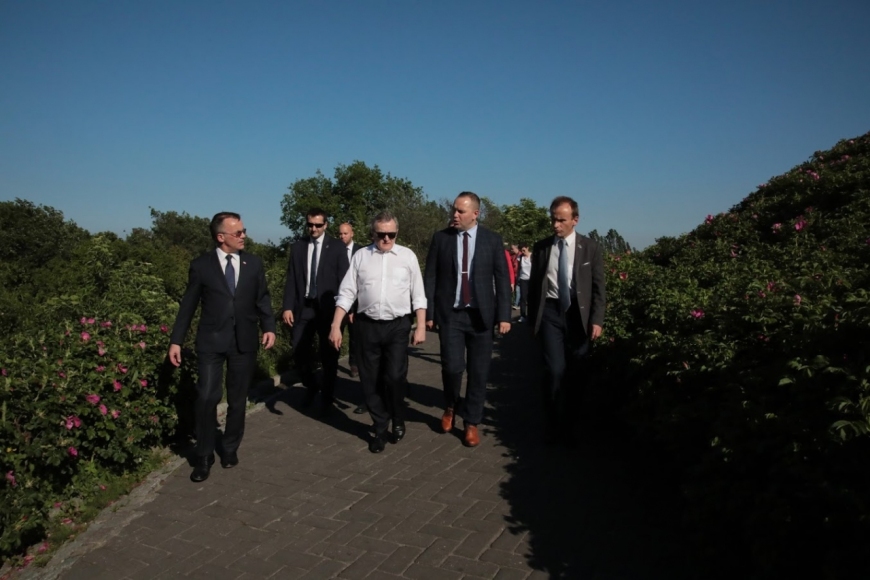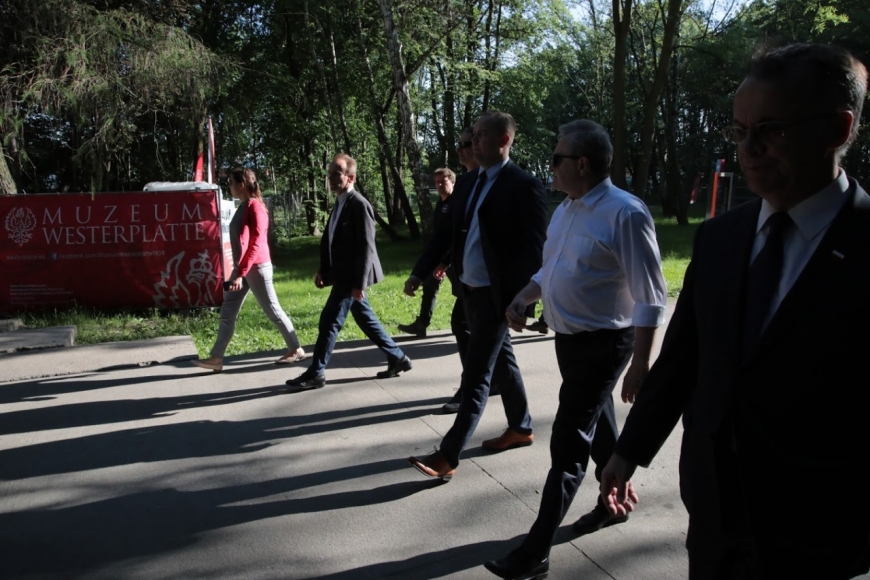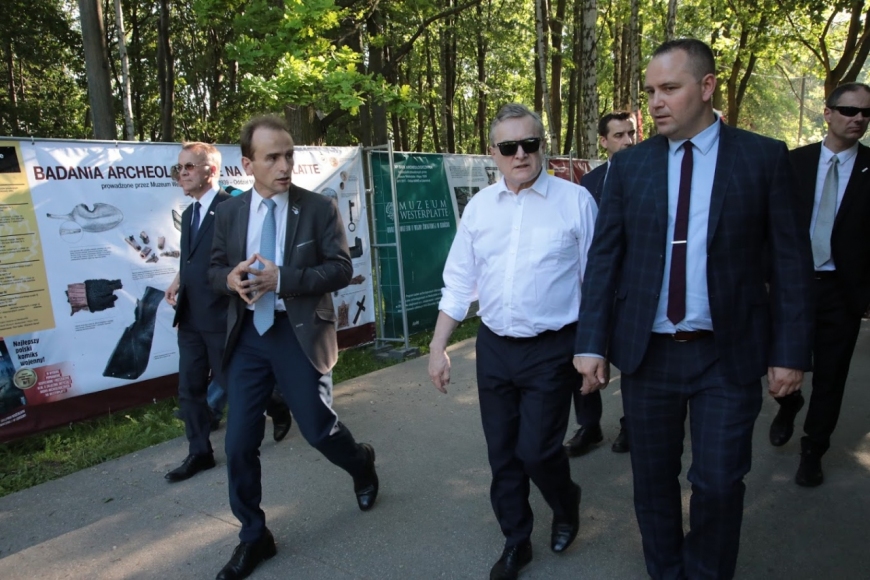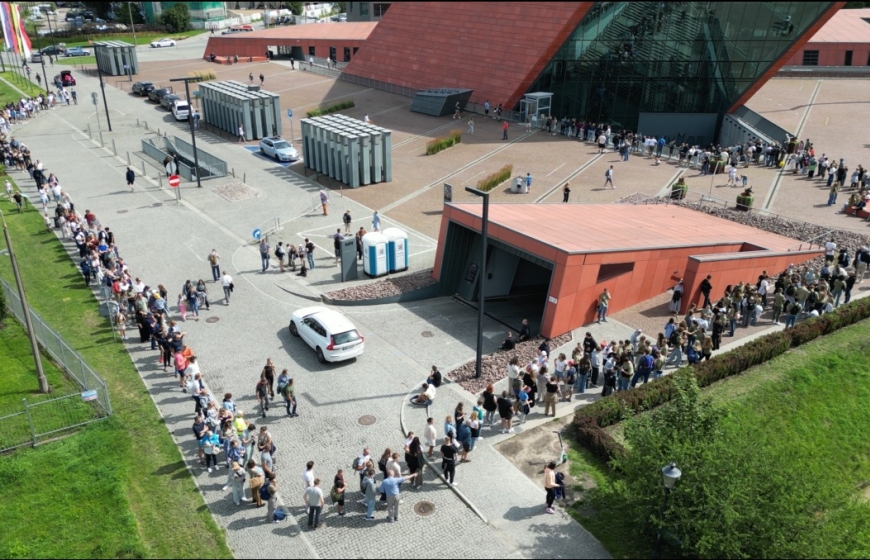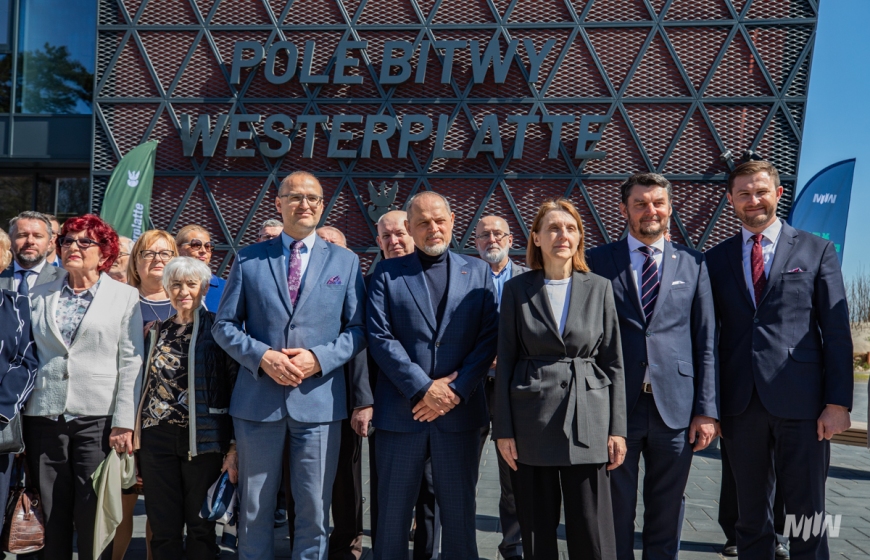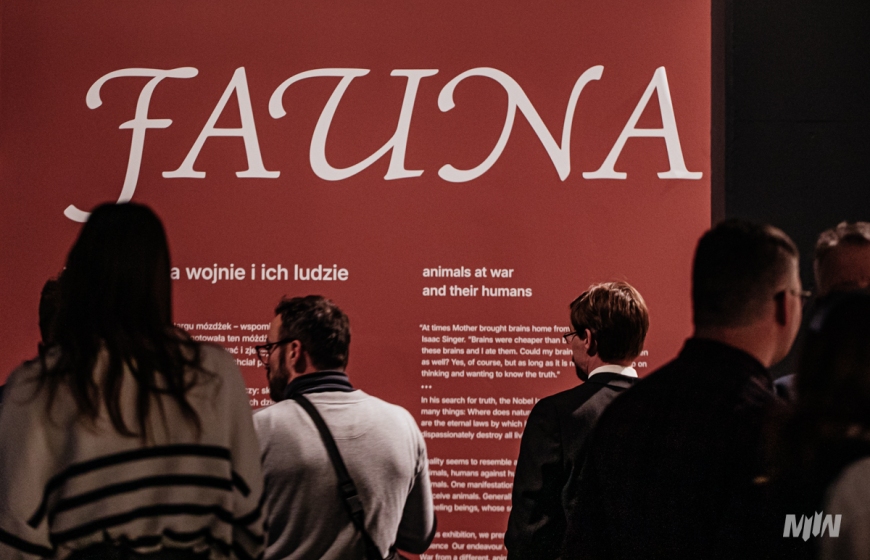The visit of the Deputy Prime Minister Piotr Gliński to the Museum and Westerplatte
On 3 June 2019, the Museum of the Second World War in Gdańsk was visited by Piotr Gliński - the Deputy Prime Minister and the Minister of Culture and National Heritage, and by Minister Jarosław Sellin - the Secretary of State at the Ministry of Culture and National Heritage. After a short meeting with the Director Mr Karol Nawrocki, Mr Gliński and Mr Sellin went to Westerplatte, among other things, to see the results of the four seasons of archaeological work carried out by the employees of the Museum of Westerplatte and the War of 1939 - a branch of the Museum of the Second World War in Gdańsk. The archaeological excavations enabled the Museum to recover nearly 50 thousand artifacts and to save them from being forgotten. Many of these artefacts were classified as providing significant insights into the history of Westerplatte. The area of the former Military Transit Storage Facility was thoroughly explored by researchers for the first time, even though only a small part of the historical area was examined. Unfortunately, this research cannot be continued, because the city of Gdańsk refuses to grant permission for further work in that area.
Westerplatte is important for every Pole as a symbol of Polish history. In spite of this, Westerplatte was not looked after for 30 years. There is only a small Guardhouse no. 1 with a small exhibition that befits the 1960s. Next to it, outside the area where the fighting took place, there is a monument. Contemporary museums must be interactive and open. In addition, they must be based on artifacts that are valued by museologists. We cannot transform everything into multimedia. We must show people what an authentic relic of the past is, because it is interesting for them. For me, it is an epitome of Polishness, a place and property of all Poles. Why did we, as Poles, fail to take care of this place for 30 years? It must change” – said the Deputy Prime Minister Piotr Gliński in Westerplatte.












